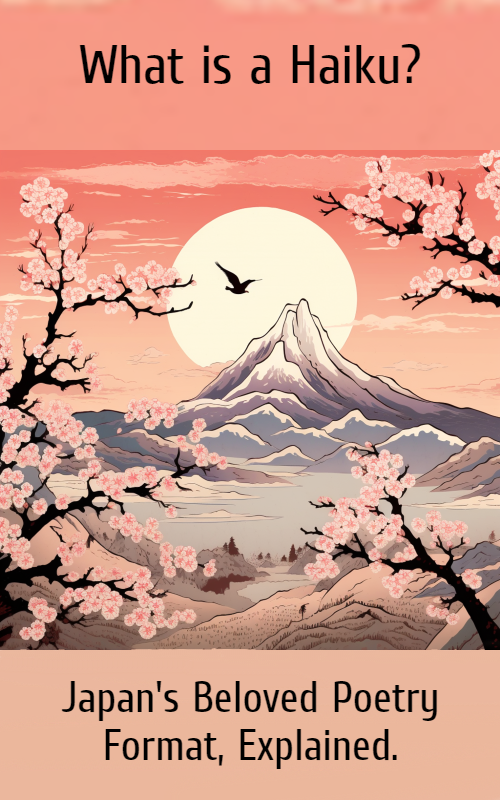Introduction: Poetry has the power to evoke emotions, paint vivid imagery, and capture the essence of a fleeting moment. Among the various poetic forms, one stands out for its simplicity, beauty, and profound impact: haiku poetry. Originating in Japan, the haiku has captivated hearts around the world with its concise structure and ability to distill the essence of nature and human experience. In this blog post, we embark on a journey to unravel the magic of haiku, exploring its history, structure, themes, and the art of crafting these beloved poems. Join us as we delve into the world of haiku, also known as Japanese poetry or haiku verse, and discover the intricate beauty of this timeless art form.
Haiku Poetry History and Origins:
The haiku traces its roots back to ancient Japan, where it emerged as a popular form of poetry in the 17th century. Influenced by Zen Buddhism and inspired by the traditional Japanese aesthetic of simplicity, haiku poets sought to capture the fleeting beauty of nature and the profound truths found in everyday life. Matsuo Basho, Yosa Buson, and Kobayashi Issa are among the renowned haiku masters whose works continue to inspire generations of poets today.
Haiku poetry Structure and Syllable Count:
One of the defining features of a haiku is its concise structure. Traditionally, a haiku consists of three lines with a syllable pattern of 5-7-5. This strict syllable count adds a layer of challenge and discipline to the poet’s craft, forcing them to convey powerful imagery and emotions within a limited space. However, in contemporary haiku, the syllable count is often more flexible, with poets focusing on capturing the essence rather than adhering strictly to the 5-7-5 structure.
Haiku poetry Themes and Nature:

Nature is at the heart of the haiku, with the changing seasons, landscapes, and natural phenomena serving as common themes. The haiku celebrates the beauty of cherry blossoms in bloom, the serenity of a moonlit night, the sound of raindrops on a roof, or the delicate dance of a butterfly. These nature-inspired images invite readers to pause, appreciate the present moment, and find solace in the wonders of the natural world.
Kigo and Seasonal Words:
A unique feature of the haiku is the use of kigo, which are seasonal words or phrases that evoke a specific time of the year. Kigo serve as anchors, grounding the poem in a particular season and adding depth to the imagery. From the cherry blossoms of spring to the snowflakes of winter, kigo create a vivid sense of time and place, enhancing the sensory experience of the haiku.
The Zen Spirit and Enlightenment:
Zen Buddhism greatly influenced the development of haiku poetry. The haiku’s brevity and focus on the present moment mirror the Zen philosophy of mindfulness and enlightenment. Through the simplicity and clarity of the haiku, poets aim to transcend the boundaries of language and connect with the profound truths of existence.
Crafting Your Own Haiku:
Creating a haiku is an art form that requires careful observation, mindfulness, and an appreciation for the beauty of simplicity. Start by immersing yourself in nature, allowing the sights, sounds, and sensations to inspire you. Choose a season or a specific moment that resonates with you. Focus on capturing a single vivid image or a fleeting emotion. Experiment with the syllable count and structure, aiming to distill your experience into its purest form. Revise and refine, seeking balance and harmony in your words.
Haiku poetry Conclusion:
The haiku, Japan’s beloved poetry format, has enchanted poets and readers for centuries. Its concise structure and focus on nature, and profound simplicity make it a powerful medium of expression. As we explored the history, structure, themes, and art of crafting haiku, we invite you to embark on your own haiku journey. Discover the beauty and depth of haiku poetry as you immerse yourself in the wonders of nature and the richness of human experience. Let the spirit of haiku guide your words as you capture the fleeting moments and evoke emotions in the simplest and most profound ways. Visit our book development page for tips and secrets to enhance your writing success. Contact Parker Publishers for further inquiries.











